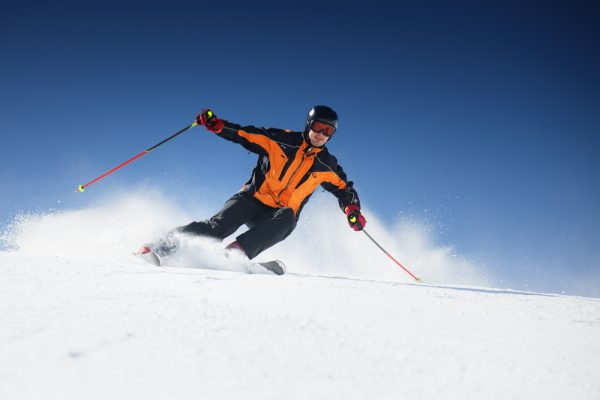Skiing/Snowboarding injuries and prevention
Hitting the slopes this season?
Thousands of skiers and snowboards enjoy the snow-sports every year; of these very few prepare for the physical demand these sports place on the body. Although snow-sports can be safe, unexpected injuries can occur.
Both upper and lower extremity injuries can occur in both skiers and snowboarders. Lower extremity injuries tend to be less common in snowboarders as both feet are strapped to the board and always point in the same direction, which generally means this protects the knee from twisting. However, with snowboarders the upper extremity (UE) is in the position to take all the force, hence UE injuries are more common.
The most common upper extremity skiing injury is to the thumb. This occurs when the skier falls or the ski pole gets stuck and the thumb is forced backwards, causing damage to the ligaments. The chance of this type of injury can be reduced by using ski poles without platforms or saber handles and by simply letting go of your ski poles if you fall.
If a snowboarder has a sudden fall forward or backwards, instinct means we put our hands out to break our fall, which often leads to wrist injuries (sprains or fractures). The chance of suffering with this type of injury can be decreased by wearing wrist guards.
The most common type of lower extremity injuries seen, especially in skiers is to the knee/s. Injury may occur to the ligaments (particularly the Anterior cruciate ligament) or to the cartilage (meniscus). The mechanism for knee injuries tends to be a forward twisting fall, which causes excessive rotation through the knee. Sometimes the bindings do not release or release too late, which again places huge strain on the knee/s. Also, a lot of knee injuries can be caused by loose-fitting or over-tightened ski boots.
Other ski/snowboarding injuries can include:
-
Shoulder strains, dislocations or fractures
-
Back injuries
-
Head injuries
What to do if you suffer an injury:
-
Apply ice. There is no excuse as you are surrounded by snow!
-
Seek advice
How to avoid injuries:
-
Skiing is a sport, so warm up and have a stretch before you get on the slopes.
-
Make sure you are in good physical condition when you go out to ski. If you are a bit out of shape, then take it easy and pick ski runs which will allow you to gradually build your way up to more challenging runs.
-
Have rest periods. A lot of ski injuries occur at the end of the day when people are getting tired or they overexert themselves on their last run of the day.
-
Keep hydrated: dehydration can affect physical ability and endurance.
-
Make sure you have the necessary equipment and it is functioning properly. Preventative equipment, such as a helmet, wrist guards and elbow & knee pads are important.
-
Strengthen the necessary muscles (quadriceps, gluteals, hamstrings, abdominals etc..) before you go on your holiday. See the link below for a few basic stretches and strengthening exercises to prepare you for your skiing holiday:
Download the skiing preparation programme here http://ptclinic.com/medlibrary/pdf/781.pdf
References
http://orthoinfo.aaos.org/topic.cfm?topic=a00321
http://www.stopsportsinjuries.org/skiing-and-snowboarding-injury-prevention.aspx
http://www.assh.org/Public/HandConditions/Pages/SkiandSnowboardInjuries.aspx
http://www.kneeclinic.info/knee_sports_injuries_skiing.php



